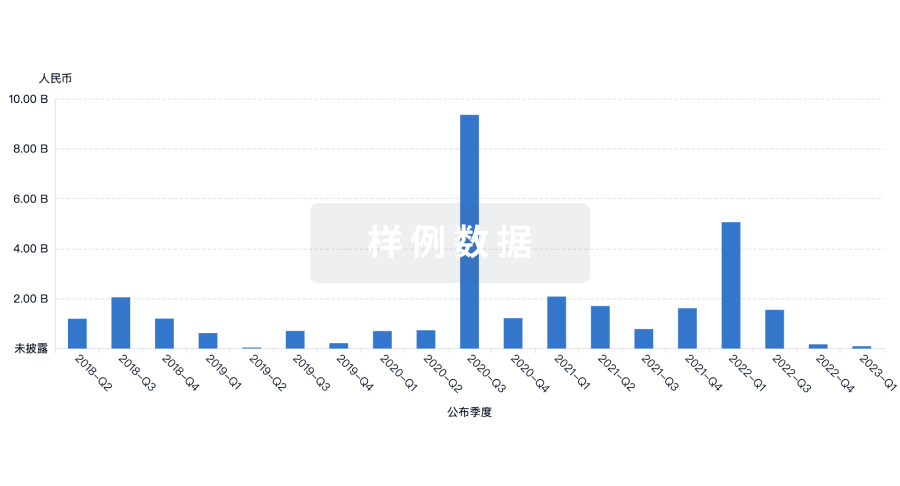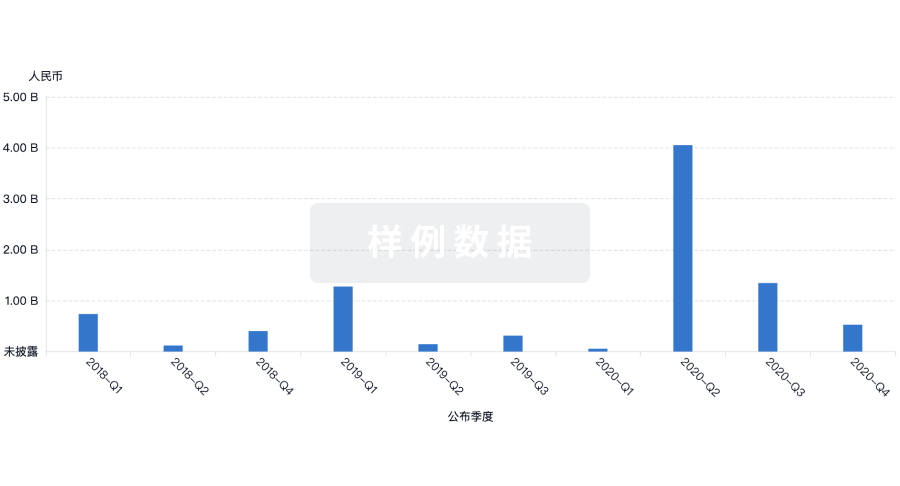预约演示
更新于:2025-05-07
Second People's Hospital of Nanning
更新于:2025-05-07
概览
关联
13
项与 南宁市第二人民医院 相关的临床试验ITMCTR2025000652
Randomized Controlled Study on Personalized Acupoint Acupuncture Combined with Accelerated Deep Transcranial Magnetic Stimulation (adTMS) for Mild Cognitive Impairment (MCI)
开始日期2024-09-10 |
申办/合作机构 |
NCT06481410
Exploratory Study on the Efficacy and Safety of Methylene Blue in Treating Severe Septic Shock Patients: A Prospective, Randomized, Controlled Trial
The goal of this clinical trial is to investigate whether methylene blue injection can safely and effectively improve the survival rate of patients with severe septic shock, shorten the duration of norepinephrine use, reduce the dosage of vasopressors, promptly correct hemodynamics, and improve tissue perfusion and organ function impairment.
开始日期2024-06-22 |
申办/合作机构 |
ChiCTR2300078223
Baseline levels and influencing factors of TMAO, TMAVA, and precursor TML in healthy adults
开始日期2023-12-01 |
申办/合作机构 |
100 项与 南宁市第二人民医院 相关的临床结果
登录后查看更多信息
0 项与 南宁市第二人民医院 相关的专利(医药)
登录后查看更多信息
559
项与 南宁市第二人民医院 相关的文献(医药)2025-06-01·Prostaglandins & Other Lipid Mediators
An updated systematic review and meta-analysis of pomegranate consumption on lipid profile
Review
作者: Huang, Aiqiong ; Liang, Kaiqin ; Cheng, Wengong
2025-05-01·Clinica Chimica Acta
Corrigendum to “Plasma reference interval of Trimethylamine-N-oxide in healthy adults: A multicenter study using Trimethylamine-N-oxide assay kit for analysis and validation” [Clin. Chim. Acta. 571 (2025) 120223]
作者: Chen, Lulu ; Fang, Qing ; Li, Chao ; Wang, Shiyun ; Li, Ying ; Li, Xiaohui ; Ouyang, Dongsheng ; Wu, Yu ; Wu, Hao ; Jiang, Junyi ; Lei, Yuyan
2025-04-01·Clinica Chimica Acta
Plasma reference interval of Trimethylamine-N-oxide in healthy adults: A multicenter study using Trimethylamine-N-oxide assay kit for analysis and validation
Article
作者: Chen, Lulu ; Fang, Qing ; Li, Chao ; Wang, Shiyun ; Li, Ying ; Li, Xiaohui ; Ouyang, Dongsheng ; Wu, Yu ; Wu, Hao ; Jiang, Junyi ; Lei, Yuyan
3
项与 南宁市第二人民医院 相关的新闻(医药)2025-04-16
·摩熵医药
注:本文不构成任何投资意见和建议,以官方/公司公告为准;本文仅作医疗健康相关药物介绍,非治疗方案推荐(若涉及),不代表平台立场。任何文章转载需要得到授权。H2受体阻滞剂市场在质子泵抑制剂(PPI)滥用风险下重现活力,2019至2023年规模增长超3倍至79.04亿元。雷尼替丁以87.4%年复合增长率成为主力,2023年销售额31.78亿元;法莫替丁注射液量价齐升,2023年销量达7432万支。西咪替丁因低价竞争市场萎缩,方明药业以19.7%份额居首。与此同时,P-CAB的崛起加剧抑酸药物竞争,但PPI的感染、骨折风险警示为H2受体阻滞剂留出空间。法莫替丁一致性评价白热化,17家过评企业备战集采,市场集中度有望提升。本文基于摩熵咨询《H2受体阻滞剂K+竞争性酸阻滞剂市场专题研究报告》,通过市场规模、企业份额与政策动态,剖析H2受体阻滞剂的竞争格局,展望行业未来演变。01H2受体拮抗剂整体市场近年来,H2受体拮抗剂市场迎来快速增长。质子泵抑制剂是目前临床上应用最广泛的抑酸药物,但质子泵抑制剂医保支出逐年增多,临床滥用普遍,FDA药物风险警示指出,滥用质子泵抑制剂药物易导致人体艰难梭菌感染,并引发腹泻、骨折及低镁元素等不良反应,因此质子泵抑制剂近几年受到了医保管控,而H2受体拮抗剂因疗效可比,经济性更佳等原因又重新走进人们视野。H2受体拮抗剂2019年以来市场增长迅速,由22.26亿元增长至79.04亿元,年复合增长率达到了37.3%,特别是第二代雷尼替丁与第三代法莫替丁市场占比均出现大幅提升。图片来源:摩熵咨询《H2受体阻滞剂K+竞争性酸阻滞剂市场研究专题报告》02首个H2受体拮抗剂——西咪替丁西咪替丁是组胺H2受体第一个上市的拮抗剂,由史克公司研制(后与葛兰素公司合并为葛兰素史克),于1976年在英国上市,1977年获FDA批准在美国上市,是第一个通过理性药物设计研制成功的药物。西咪替丁获批厂家众多,仅片剂就有近三百家企业获批。虽然西咪替丁用量较多,但因价格亲民,整体市场规模有限,仅在2至3亿元之间,且市场还呈现出逐渐缩小的趋势。方明药业是西咪替丁TOP1企业,占据19.7%的市场份额。03第二代H2受体拮抗剂——雷尼替丁雷尼替丁是继西咪替丁之后的第二代H2受体拮抗剂,在1981年由葛兰素公司研制(后与史克公司合并为葛兰素史克)。雷尼替丁分子结构中以呋喃环取代西咪替丁的咪唑环,为强效选择性H2受体拮抗药,抑酸作用比西咪替丁强5-8倍。近年来,雷尼替丁市场规模快速提升,头部企业占比差距较小。市场在2019年开始呈现快速增长态势,至2023年销售额已达31.78亿元,年复合增长率达到了87.4%。注射剂是其主要剂型,占比达96%。数据来源:摩熵医药销售数据库雷尼替丁销售额达1亿元以上企业有6家,但6家企业的销售占比差距不大,均处于10%至20%区间,市场相对分散。雷尼替丁各级医院市场分析(以南宁市为例)据摩熵医药药物流向数据显示,以南宁市为例,雷尼替丁2023年各季度销售量和销售额如下图:图片来源:摩熵咨询《H2受体阻滞剂K+竞争性酸阻滞剂市场研究专题报告》雷尼替丁2023年销售额TOP3医院(南宁市为例)分别为广西壮族自治区民族医院、广西医科大学第二附属医院、南宁市第二人民医院。雷尼替丁2023年销售市场主要分布在二、三级医院,其中三级医院占据大部分市场份额,各季度三级医院销售额占比均达到50%以上。图片来源:摩熵咨询《H2受体阻滞剂K+竞争性酸阻滞剂市场研究专题报告》 04第三代H2受体拮抗剂——法莫替丁法莫替丁是继西咪替丁和雷尼替丁之后的第三代H2受体拮抗剂,是由日本山之内公司(现为安斯泰来)研究开发,主要剂型是注射剂,1985年首先在日本上市。法莫替丁是一种特异性更高的H2受体拮抗剂,其抑酸作用是西咪替丁40倍左右,雷尼替丁的8倍左右。目前国内获批上市的法莫替丁剂型众多,包括注射剂、片剂、胶囊剂、分散片、颗粒剂、咀嚼片等。注射用法莫替丁是法莫替丁主要品种,目前市场上占比超70%。图片来源:摩熵咨询《H2受体阻滞剂K+竞争性酸阻滞剂市场研究专题报告》2019年注射用法莫替丁中位挂网价为2.31元/支,2020年提升至32.47元/支,2021年至2023年基本稳定在29元/支。近年来注射用法莫替丁销量也呈现快速增长态势,2023年销售量达到了7432万支,较2019年提升了近7倍。受注射用法莫替丁单价及销量双重因素的影响,法莫替丁市场增长迅速。2019-2023年年复合增长率达到了78.9%,至2023年市场规模达到了29.29亿元,位于所有H2受体拮抗剂第二位。法莫替丁TOP5企业为威奇达光明制药、海欣药业、康诺药业、通惠制药和双成药业市场占比分别为15.5%、14.2%、11.6%、7.7%和4.9%,TOP5企业市场占整体市场53.9%,市场集中度较低。法莫替丁注射液是2024年一致性评价最热门的品种之一。2024年1月2日,亚邦医药法莫替丁注射液通过一致性评价,拿下首家过评,随后布霖生物、生生药业等企业相继过评。截至2024年11月20日,已有17家企业通过法莫替丁注射液一致性评价,另外还有57家企业申请在审评审批中。数据来源:摩熵医药数据库05生物利用度高的抑酸药物——罗沙替丁罗沙替丁(盐酸罗沙替丁醋酸酯)是由日本脏器制药研发,最早于1986年于日本上市。罗沙替丁没有抗雄性激素的作用,并且不影响肝脏药物代谢酶,不干扰其他药物在肝脏内的代谢,在临床中具有较好的生物利用度,整体疗效优于其他H2受体阻滞剂,安全性与质子泵抑制剂相当。原研已获批缓释胶囊、缓释颗粒剂和注射剂三种剂型,但原研尚未进入国内市场,国内仅有注射剂一种。仅上市注射剂剂型来说,轩升制药市场占比超50%。从市场销售额来看,2021年罗沙替丁市场达到峰值,销售额达15.16亿元,近两年有所降低,2023年为12.54亿元。目前罗沙替丁市场基本由轩升制药(原北京四环制药子公司,2022年4月被北京四环制药出售)和哈药集团占据,市场占比分别为57.8%和34.5%。图片来源:摩熵咨询《H2受体阻滞剂K+竞争性酸阻滞剂市场研究专题报告》根据国家组织药品联合采购办公室于2024年12月30日正式宣布罗沙替丁醋酸酯中选第十批集采,中选价格最低为2.74元,最高为4.58元。根据摩熵医药数据库统计显示,截至2024年11月,注射用盐酸罗沙替丁醋酸酯已有16家企业通过一致性评价,包括瑞阳制药、轩升制药、奥赛康药业等。其中瑞阳制药在2022年1月5日视同通过一致性评价,拿下首家过评,昊益制药也于2024年11月11日视同通过一致性评价,拿到了集采末班车车票。注射用盐酸罗沙替丁醋酸酯在2024年有10家企业挂网销售,挂网价格普遍在每支百元以上,中位中标价在143.80元/支。仅有瑞阳制药一家在2024年挂网价格在百元以下,为46.87元/支。而在注射用盐酸罗沙替丁醋酸酯激烈的竞争程度下,价格也将进一步下降。数据来源:摩熵医药数据库 小结H2受体阻滞剂市场近年快速复苏,2019至2023年规模从22.26亿激增至79.04亿,年复合增长率37.3%。雷尼替丁以31.78亿元销售额领跑,法莫替丁凭借量价齐升达29.29亿元,威奇达光明制药等企业瓜分分散市场。西咪替丁因价格低廉渐被边缘化,市场规模仅2-3亿元。一致性评价与集采推动行业洗牌,法莫替丁注射液17家过评,第十一批集采或重塑格局。P-CAB虽受推崇,但质子泵抑制剂的滥用警示提示需平衡疗效与安全性。未来H2受体阻滞剂或凭借经济性与PPI管控政策持续增长,而P-CAB的创新与仿制之争将决定市场走向。END本文为原创文章,转载请留言获取授权H2受体阻滞剂钾离子竞争性酸阻滞剂市场研究专题报告下期内容预告目录一、P-CAB市场三强争霸!科伦、扬子江等56家药企竞逐伏诺拉生仿制近期将持续更新,敬请期待近期热门资源获取CGT产业现状与未来趋势蓝皮书-202406中药行业现状与未来趋势白皮书-2024072023年医药企业综合实力排行榜-202408跨越国界,引领创新:中国药企出海的布局实践-202408专利即将到期五大重磅小分子药品,国内仿制药“战况”几何?-202409中国放射性药物市场现状分析报告-202410合成生物产业发展前景及中国合成生物产业链上中下游企业分析-202410中国合成生物学创投市场分析报告-202410中国糖尿病临床诊疗与药物多渠道市场数据分析-202411基于剂型改良的复杂注射剂分析--微球篇-2024112024医美注射材料市场发展分析报告-20241213国家药品集采跟踪报告-前9批次集采回顾与展望-202411近期更多摩熵咨询热门报告,识别下方二维码领取联系我们,体验摩熵医药更多专业服务会议合作园区服务数据库咨询定制服务媒体合作👆👆👆点击上方图片,即可开启摩熵化学数据查询点击阅读原文,申请摩熵医药企业版免费试用!
上市批准一致性评价医药出海
2024-11-22
HONG KONG, Nov. 22, 2024 /PRNewswire/ -- Akeso, Inc. (9926.HK) ("Akeso" or the "Company") announced that the National Medical Products Administration (NMPA) of China has accepted its supplemental new drug application (sNDA) for penpulimab, a differentiated PD-1 monoclonal antibody, in combination with anlotinib for the first-line (1L) treatment of advanced hepatocellular carcinoma (HCC).
This marks penpulimab's fifth indication, following its approval for first line treatment of squamous non-small cell lung cancer, first line and third-line or further treatment for metastatic nasopharyngeal carcinoma, and third-line treatment of relapsed or refractory classical Hodgkin lymphoma. The differentiated clinical value of the penpulimab combination therapy is expected to offer a more effective solution for patients with liver cancer.
The sNDA for this new indication is supported by the ALTN-AK105-III-02 study, a multicenter, randomized, open-label, parallel-controlled Phase III clinical trial. The study demonstrated positive outcomes in both progression-free survival (PFS) and overall survival (OS). These encouraging clinical results were featured as a "Late Breaking Abstract (LBA)" at the 2024 European Society for Medical Oncology (ESMO) Annual Meeting.
Clinical data highlights:
Penpulimab combined with anlotinib regimen reduced the risk of disease progression or death by 47% compared to the control group (median PFS: 6.9 months vs. 2.8 months, HR=0.53, P<0.0001);
Penpulimab combined with anlotinib regimen reduced the risk of death by 31% compared to the control group (median OS: 16.5 months vs. 13.2 months, HR=0.69, P=0.0013).
The combination of penpulimab and anlotinib significantly improved both PFS and OS in HCC patients compared to sorafenib, with no new safety signals. This makes the combination a promising first-line treatment option for advanced HCC.
The ALTN-AK105-III-02 study marks the second global Phase III trial to achieve positive results for the combination of an immune checkpoint inhibitor and an oral multi-targeted tyrosine kinase inhibitor in the first-line treatment of advanced HCC. These encouraging findings pave the way for this combination therapy to become a superior treatment option for patients with advanced hepatocellular carcinoma.
About Penpulimab
Penpulimab is a differentiated PD-1 monoclonal antibody with an IgG1 subtype and modified Fc region, enhancing immunotherapy efficacy while minimizing adverse reactions. Developed by Akeso Biopharma, its commercialization is managed through a joint venture with Chia Tai-Tianqing Pharmaceutical Group, a subsidiary of Sino Biopharm.
Penpulimab has been approved for the following indications:
First-line treatment of locally advanced or metastatic squamous non-small cell lung cancer (sqNSCLC) in combination with chemotherapy.
Relapsed or refractory classical Hodgkin lymphoma (cHL) after at least two lines of systemic chemotherapy.
Recurrent/metastatic nasopharyngeal carcinoma (NPC) who have failed to respond to two or more prior lines of systemic therapy.
Penpulimab in combination therapy for the first-line treatment of metastatic NPC, has had its marketing application accepted by the NMPA and the FDA. Additionally, the marketing application for its monotherapy use in third-line or further treatment of metastatic nasopharyngeal carcinoma has also been accepted by the FDA.
Ongoing late-stage clinical trials of penpulimab are progressing for liver cancer, gastric cancer, and other indications.
About Akeso
Akeso (HKEX: 9926.HK) is a leading biopharmaceutical company committed to the research, development, manufacturing and commercialization of the world's first or best-in-class innovative biological medicines. Founded in 2012, the company has created a unique integrated R&D innovation system with the comprehensive end-to-end drug development platform (ACE Platform) and bi-specific antibody drug development technology (Tetrabody) as the core, a GMP-compliant manufacturing system and a commercialization system with an advanced operation mode, and has gradually developed into a globally competitive biopharmaceutical company focused on innovative solutions. With fully integrated multi-functional platform, Akeso is internally working on a robust pipeline of over 50 innovative assets in the fields of cancer, autoimmune disease, inflammation, metabolic disease and other major diseases. Among them, 22 candidates have entered clinical trials (including 11 bispecific/multispecific antibodies and bispecific antibody-drug conjugates). Additionally, 5 new drugs are commercially available, and 5 new drugs across 7 indications are currently under regulatory review for approval. Through efficient and breakthrough R&D innovation, Akeso always integrates superior global resources, develops the first-in-class and best-in-class new drugs, provides affordable therapeutic antibodies for patients worldwide, and continuously creates more commercial and social values to become a global leading biopharmaceutical enterprise.
For more information, please visit
and follow us on Linkedin, and X (formerly Twitter)
SOURCE Akeso, Inc.
WANT YOUR COMPANY'S NEWS FEATURED ON PRNEWSWIRE.COM?
440k+
Newsrooms &
Influencers
9k+
Digital Media
Outlets
270k+
Journalists
Opted In
GET STARTED

临床结果临床3期免疫疗法上市批准ASCO会议
2023-12-22
·生物谷
德谷门冬双胰岛素不仅经济实惠、用药简单,而且还具有依从性高、低血糖风险低、药物副作用少等优点。
随着糖尿病病程的延长,患者胰岛β细胞功能逐渐减退并持续胰岛素抵抗,胰岛素将成为部分2型糖尿病(T2DM)患者改善血糖控制、达到良好糖化血红蛋白(HbA1c)目标的主要治疗手段。胰岛素的研发目标是能够模拟正常生理性胰岛素的分泌,即不但能够提供良好的餐时胰岛素覆盖,而且同时达到良好的基础覆盖,如目前常见的双时相胰岛素,但由于其两种成分通常互相干扰而无法达到稳定长效的血糖控制[1]。而基础+餐时胰岛素的给药模式虽然能够模拟胰岛素生理分泌的过程,但由于给药过程繁琐、易用混等问题导致血糖无法达标[2] 。
随着胰岛素制剂更新迭代,临床上面临着更换胰岛素治疗的有效性及其带来的安全性问题,国外研究表明,与预混胰岛素、基础胰岛素等相比,德谷门冬双胰岛素(insulin degludec and insulin aspart, IDegAsp)对T2DM患者的血糖控制更佳[3-5]。
据调查,我国居民喜爱碳水程度居全球首位,对于日常碳水食用比例越高,其餐后血糖将会相应的增高! IDegAsp是2019年进入我国的新型可溶性双胰岛素制剂,由70%长效德谷胰岛素和30%短效门冬胰岛素构成,其两种成分相互独立,保留了各自药动学和药效学特征[6]。因此可提供较佳的餐时和基础胰岛素覆盖。全球性Ⅲ期临床试验结果表明,每日2次给予IDegAsp与门冬胰岛素30(insulin aspart 30, IAsp30)相比,患者餐后血糖(PPG)及空腹血糖(FPG)控制更佳、低血糖风险更低[7]。也就是说, IDegAsp能有效解决因食用碳水过多而导致餐后血糖升高的问题!
现为大家分享1例确诊为T2DM患者经治疗后,转换为IDegAsp来长期控制空腹及餐后血糖的案例。
病例:
患者男,33岁。以“口干、多饮、多尿、消瘦3月余”为主诉入院。3月前,患者出现口干、多饮、多尿、体重减轻4 kg,但未就诊。此次就诊后测血糖:FPG 11.64 mmol/L,餐后2小时血糖 20.58 mmol/L,HbA1c 9.40%。
查体:身高:172 cm,体重82 kg,体重指数(BMI)27.7 k g/m2,腰围90 cm。
辅助检查:血糖相关:FPG 11.64 mmol/L,餐后2小时血糖 (2h-PPG)20.58 mmol/L, HbA1c 10.1%。尿糖4+,酮体+。患者馒头餐试验结果见表1。血脂分析:甘油三酯(TG)2.23 mmol/L,总胆固醇(TC)6.56 mmol/L,高密度脂蛋白胆固醇(HDL-C)1.12 mmol/L,低密度脂蛋白胆固醇(LDL-C)4.62 mmol/L。肝功能:谷丙转氨酶(ALT)64 U/L 。肾功能:血肌酐41.2 μmol/L,估算的肾小球滤过率(eGFR)120.9 ml/(min·1.73m2),24小时尿微量白蛋白20 mg,尿白蛋白/肌酐12.5 mg/g。。
表1:患者馒头餐试验结果
心脏超声:二尖瓣、三尖瓣轻度关闭不全,左室收缩功能测定在正常范围。
治疗:腹部+泌尿系+前列腺+阴茎超声:脂肪肝,余未见异常。颈动脉+双下肢动脉超声:双下肢动脉二维及彩色多普勒超声未见异常,双侧颈动脉二维及彩色多普勒超声未见明显异常。
糖尿病并发症筛查:内脏脂肪测定:内脏脂肪面积122 cm2,腹部皮下脂肪面积227 cm2。下肢多普勒检查提示:右侧下肢ABI指数是1.08,左侧下肢ABI指数是1.12,提示患者右侧下肢动脉供血正常,左侧下肢动脉供血正常。感觉震动阈值检查:提示患者未发生糖尿病周围神经病变。眼底病变筛查:右眼无糖尿病视网膜病变,未见明显异常;左眼无糖尿病视网膜病变,未见明显异常。
入院诊断
1.代谢综合征(2型糖尿病、混合性高脂血症、中心型肥胖);2.包皮炎;3.肝功能损害;4.维生素D缺乏;5.脂肪肝;6.二尖瓣轻度关闭不全;7.三尖瓣轻度关闭不全。
入院治疗方案
指导饮食,加强运动;胰岛素泵强化降糖;己酮可可碱注射液改善循环;阿托伐他汀钙片20 mg调脂、稳定斑块;甘草酸类护肝;泌尿外科会诊给予外用药物治疗。
胰岛素泵强化降糖方案为:入院后予胰岛素泵18 U(三餐前6U-6U-6U)降糖和二甲双胍恩格列净片500 mg bid治疗,第9日调整胰岛素泵用量至20 U(三餐前6U-6U-6U)。入院后予胰岛素泵的治疗方案和结果如图1所示。
图1.入院后予胰岛素泵降糖治疗的治疗方案及血糖情况
胰岛素泵治疗将血糖降至可控范围后,调整治疗方案为每天早晚餐前皮下注射德谷门冬双胰岛素18 U-18 U+早晚餐前二甲双胍恩格列净片500 mg Bid。
讨论
此病例特点为:
1.青年男性,病程短;
2.口干、多饮、多尿、消瘦3月;
3.查体:BMI :27.7 kg/m2,腹型肥胖;
4.入院后辅助检查;
HbA1c 10.1%,血脂异常,脂肪肝。入院后给予胰岛素泵和二甲双胍将患者的空腹血糖及餐后血糖调至预期目标。
该患者的血糖控制目标为:空腹血糖4.4~7.0 mmol/L;非空腹血糖<10 mmol/L;HbA1c <7%。该患者后期选用德谷门冬双胰岛素每天两次早晚餐皮下注射。最终降糖方案为早晚餐前德谷门冬双胰岛素18 U-18 U+早晚餐前二甲双胍恩格列净片500 mg Bid。
院外电话回访显示,患者无低血糖事件发生;自行监测FPG为5~6 mmol/L,2h-PPG 8~10 mmol/L;通过加强饮食控制及运动后,体重较前下降3 kg。
目前临床短期胰岛素强化治疗方案主要包括胰岛素泵皮下持续输注(CSII)、基础-餐时胰岛素1~3次/d注射、预混胰岛素2~3次/d注射等[8]。CSII因经济等原因在国内没有广泛应用。餐时-基础胰岛素(4次/d)或预混胰岛素类似物(3次/d)治疗患者需住院,接受多次胰岛素注射,血糖监测频繁,影响治疗依从性。预混人胰岛素2次/d注射难以满足临床需求,中、晚餐前以及夜间低血糖风险较高,降糖效果及治疗依从性低于预混胰岛素类似物[9]。 因此,寻找注射次数少、治疗方案简单、安全性高的胰岛素强化治疗方案是临床需求。
从患者角度来看,IDegAsp副作用小、经济实惠、用药简单。从医生角度来看,其依从性高、低血糖风险小、药物副作用小、心脑血管事件风险低。IDegAsp是按固定配比7:3的德谷胰岛素(IDeg)和门冬胰岛素(IAsp)构成,在溶液中可保持独立的化学稳定性,且皮下注射后可发挥各自的药代动力学作用。基础成分德谷胰岛素可在皮下注射后形成稳定的可溶性多六聚体储库,德谷胰岛素单体逐渐从该储库中分离,被持续和缓慢地吸收入循环系统,并通过脂肪酸侧链与白蛋白可逆结合,从而获得超长、平稳的降糖作用。餐时成分门冬胰岛素在注射后以单体的形式迅速入血起效,发挥餐时胰岛素作用[10]。预混胰岛素、基础胰岛素、基础-餐时胰岛素方案控制不佳的患者可转换为IDegAsp方案治疗,降糖效果和安全性良好,总体低血糖及确证性夜间低血糖发生率降低[11-13]。
总而言之,德谷门冬双胰岛素不仅经济实惠、用药简单,而且还具有依从性高、低血糖风险低、药物副作用少等优点。从我国国情角度来看,我国碳水化合物供能比高,T2DM餐后血糖升高明显,德谷门冬双胰岛素既能快速、高效的降低餐后血糖和空腹血糖,而且还能使血糖达到一个稳定状态,此外,还具有降低确证性低血糖、夜间低血糖的发生率等优势!
参考文献
[1] LECHLEITNER M, CLODI M, ABRAHAMIAN H, et al. Insulin therapy of type 2 diabetes mellitus (Update 2019) [J]. Wien Klin Wochenschr, 2019, 131(Suppl 1): 39 - 46.
[2] SHARMA AK, TANEJA G, KUMAR A, et al. Insulin analogs: glimpse on contemporary facts and future prospective [J]. Life Sci, 2019, 219: 90 - 99.
[3] FUJIMOTO K, IWAKURA T, ABURAYA M, et al. Twice-daily insulin degludec/insulin aspart effectively improved morning and evening glucose levels and quality of life in patients previously treated with premixed insulin: an observational study[J]. Diabetol Metab Syndr, 2018, 10(1): 64.
[4] JANG HN, YANG YS, OH TJ, et al. Low fasting glucose-to estimated average glucose ratio was associated with superior response to insulin degludec/aspart compared with basal insulin in patients with type 2 diabetes [J]. J Diabetes Investig, 2022, 13 (1): 85 - 93.
[5] FULCHER GR, AKHTAR S, AL-JASER SJ, et al. Initiating or switching to insulin degludec/insulin aspart in adults with type2 diabetes: a real-world, prospective, non-interventional study across six countries [J]. Adv Ther, 2022, 39(8): 3735 - 3748.
[6] GLASTRAS SJ, COHEN N, DOVER T, et al. The clinical role of insulin degludec/insulin aspart in type 2 diabetes: an empirical perspective from experience in Australia [J]. J Clin Med, 2020, 9 (4): 1091.
[7] CHO KY, NAKAMURA A, OBA-YAMAMOTO C, et al. Switching to once-daily insulin degludec/insulin aspart from basal insulin improves postprandial glycemia in patients with type 2 diabetes mellitus: randomized controlled trial[J]. Diabetes Metab J. 2020 Aug;44(4):532-541.
[8] 2型糖尿病短期胰岛素强化治疗专家共识.编写委员会.2 型糖尿病短期胰岛素强化治疗专家共识(2021年版).中华糖 尿病杂志,2022,14:21-31.
[9] Wen WL,Tsai KB,Lin YH,et al.Successful management of type IV hypersensitivity reactions to human insulin analogue with injecting mixtures of biphasic insulin aspart and dexamethasone.J Formos Med Assoc,2019,118:843-848.
[10]Haahr H,Fita EG,Heise T.A review of insulin Degludec/insulin Aspart:pharmacokinetic and pharmacodynamic properties and their implications in clinical use.Clin Pharmacokinet,2017,56:339-354.
[11] Philis TA,Astamirova K,Gupta Y,et al.Similar glycaemic control with less nocturnal hypoglycaemia in a 38-week trial comparing the IDegAsp co-formulation with insulin glargine U100 and insulin aspart in basal insulin-treated subjects with type 2 diabetes mellitus.Diabetes Res Clin Pract,2019,147:157- 165.
[12] Franek E,Haluzík M,Canecki VS,etal.Twice-daily insulin degludec/insulin aspart provides superior fasting plasma glucose control and a reduced rate of hypoglycaemia compared with biphasic insulin aspart 30 in insulin-naïve adults with type 2 diabetes. Diabet Med,2016,33:497-505.
[13] Kumar A,Franek E,Wise J,et al.Efficacy and safety of once-daily insulin degludec/insulin aspart versus insulin glargine(U100)for 52 weeks in insulin-naïve patients with type 2 diabetes:a random ized controlled trial.PLoS One,2016,11:e0163350.
作者简介:
张君 教授
•南宁市第二人民医院内分泌科
•副主任医师,硕士研究生
•广西中医药大学本科毕业,广西医科大学内分泌硕士研究生,现任南宁市医学会内分泌学分会秘书,南宁市医学会预防医学会委员,善长于糖尿病及相关并发症,甲亢、代谢紊乱等内分泌相关疾病,2019年在广州南方进修学习,至今发表论文数篇,具有扎实的中、西医系统理论,熟悉内科常见病、急、重病的救治。

临床结果临床3期
100 项与 南宁市第二人民医院 相关的药物交易
登录后查看更多信息
100 项与 南宁市第二人民医院 相关的转化医学
登录后查看更多信息
组织架构
使用我们的机构树数据加速您的研究。
登录
或

管线布局
2025年12月11日管线快照
无数据报导
登录后保持更新
药物交易
使用我们的药物交易数据加速您的研究。
登录
或

转化医学
使用我们的转化医学数据加速您的研究。
登录
或

营收
使用 Synapse 探索超过 36 万个组织的财务状况。
登录
或

科研基金(NIH)
访问超过 200 万项资助和基金信息,以提升您的研究之旅。
登录
或

投资
深入了解从初创企业到成熟企业的最新公司投资动态。
登录
或

融资
发掘融资趋势以验证和推进您的投资机会。
登录
或

生物医药百科问答
全新生物医药AI Agent 覆盖科研全链路,让突破性发现快人一步
立即开始免费试用!
智慧芽新药情报库是智慧芽专为生命科学人士构建的基于AI的创新药情报平台,助您全方位提升您的研发与决策效率。
立即开始数据试用!
智慧芽新药库数据也通过智慧芽数据服务平台,以API或者数据包形式对外开放,助您更加充分利用智慧芽新药情报信息。
生物序列数据库
生物药研发创新
免费使用
化学结构数据库
小分子化药研发创新
免费使用
